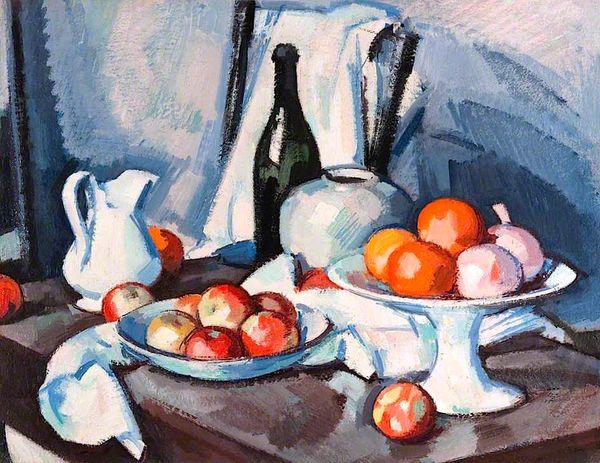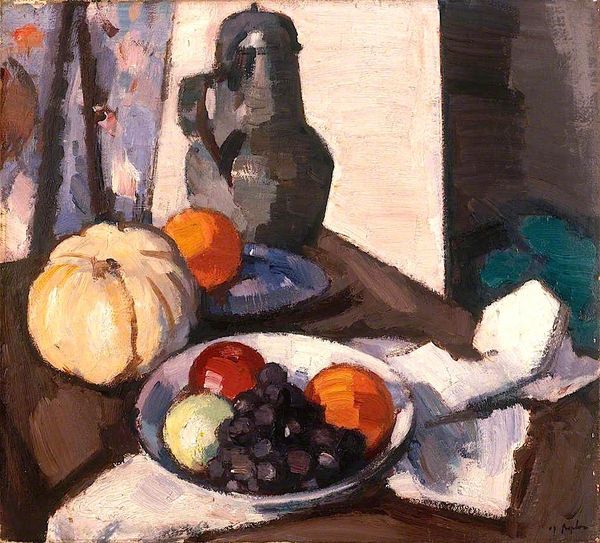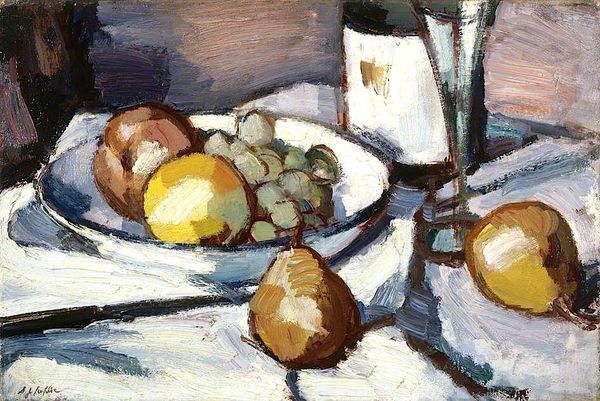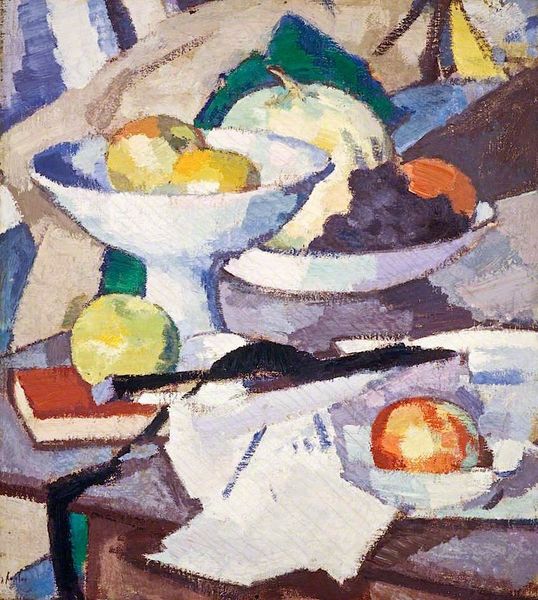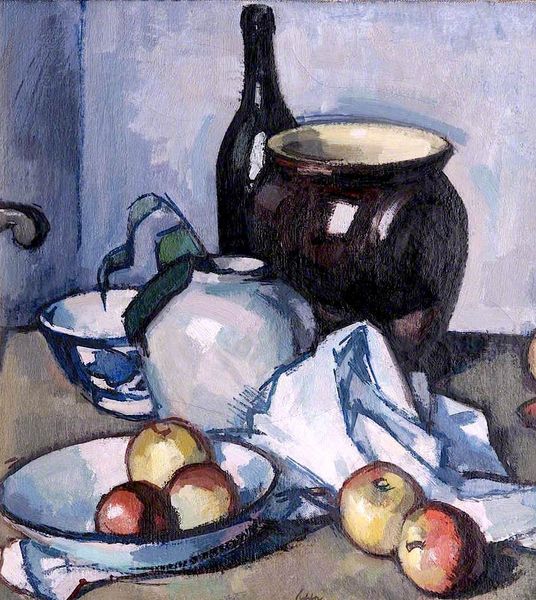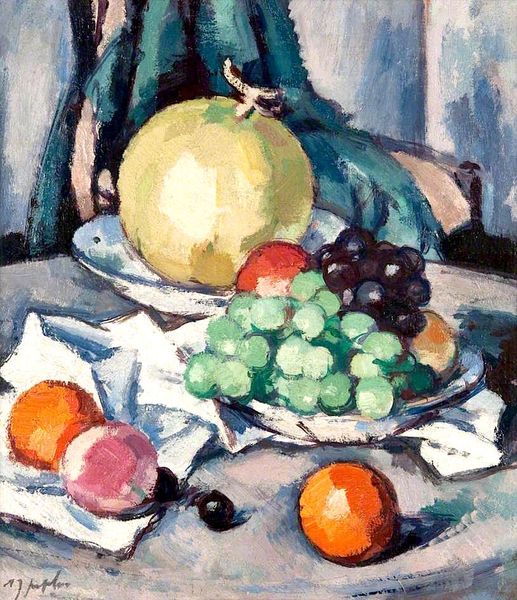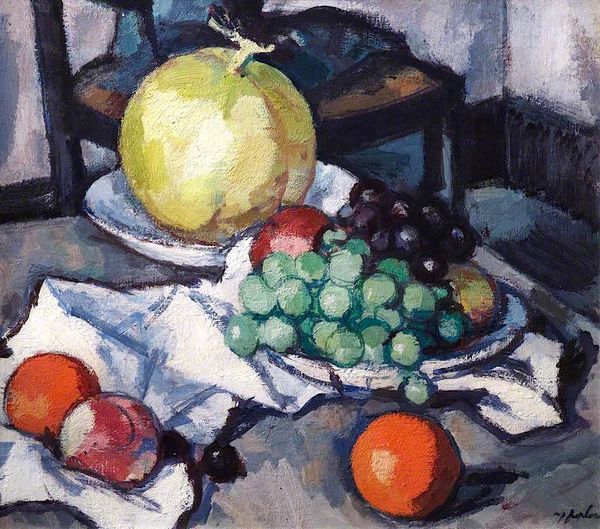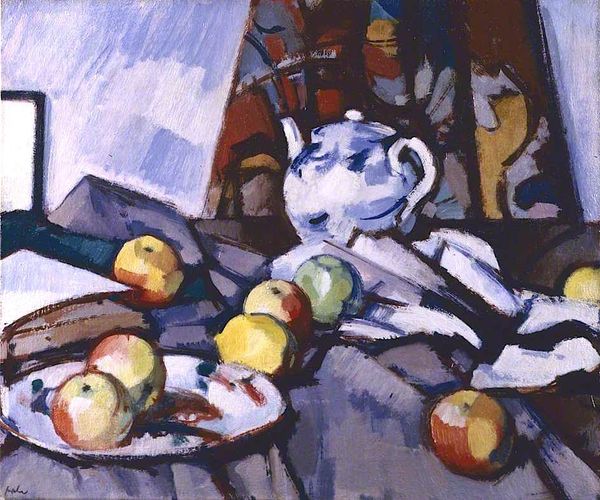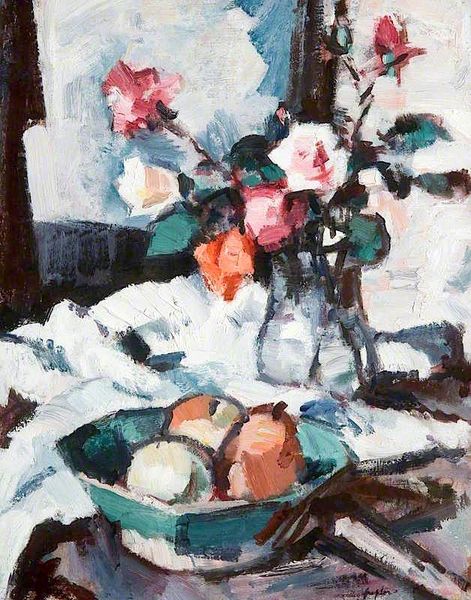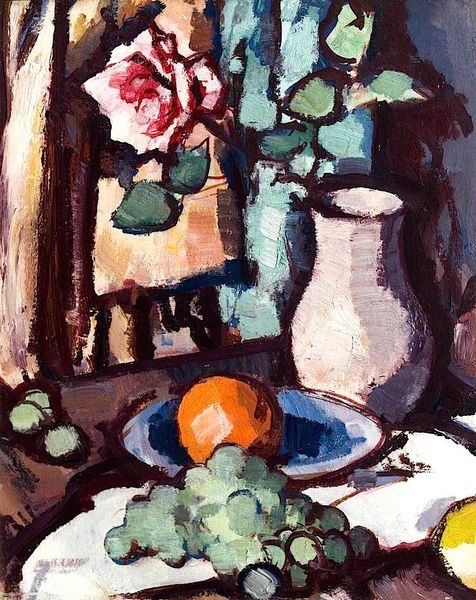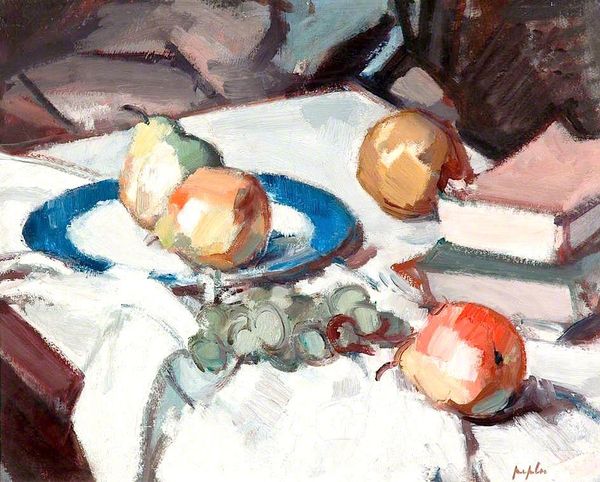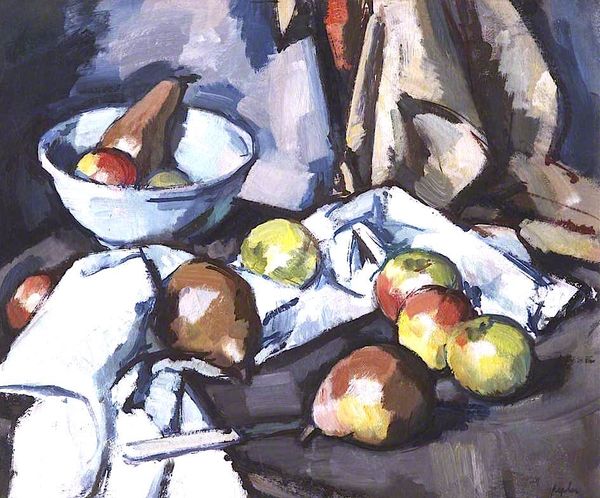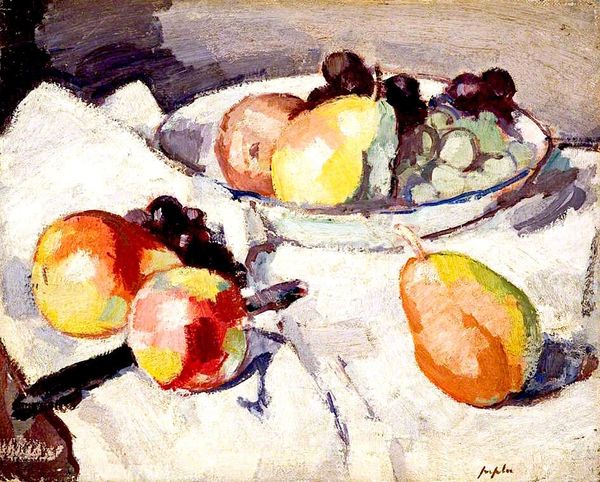
Copyright: Public domain
Curator: Looking at this still life, I'm immediately struck by its domesticity. It feels like a moment captured from everyday life. Editor: Yes, this is "Still Life with Jug and Grapes," painted in 1925 by Samuel Peploe, part of the Scottish Colourists movement. Peploe and his contemporaries, like Cadell, Hunter, and Fergusson, often looked to domestic scenes, and this one speaks to that influence. Curator: The brushwork is so bold and direct; there's an almost joyful quality to how the paint has been applied. The choice of simple objects -- fruit, a white jug – seems so deliberate. What can you tell me about the Scottish Colourists movement? I imagine, at that time, still life represented specific aesthetic and political positions? Editor: Absolutely. They drew heavily from Post-Impressionism, particularly from artists like Cézanne and Matisse, which had huge ramifications for how they viewed their Scottish national identity. Peploe, in fact, uses the principles of French avant-gardism, the flattened perspective, and the use of color for its emotional effect to explore tensions between national artistic independence and global artistic influence. Curator: I am interested in what objects, the white jug for example, do beyond just aesthetic appeal. To me, a simple object becomes part of broader discourse in still life paintings; these invite conversation on access to commodities, cultural identity and perhaps the historical power dynamics associated with class and gender roles. What are the implications of Peploe's stylistic choices in relation to those considerations? Editor: It's a delicate balance. While the accessibility of everyday objects provides a democratic touch, especially considering Peploe's audience and patrons from middle-class backgrounds, we have to remember who gets to represent these "everyday" moments and experiences. He simplifies and abstracts forms, but does it translate into inclusivity, or a sort of homogenization where cultural specificities disappear in favor of a universal aesthetic language influenced by the market’s demands and trends? Curator: I can appreciate that critique; it’s essential we don't divorce art from the conditions of its creation. I was ready to interpret this work with romanticism, now I'm looking at it with greater critical consideration. Editor: Exactly! That push and pull is what makes art so compelling. There is an ongoing negotiation and construction of power, values, and identities taking place through these painted renderings of domestic arrangements, whether visible on the surface or subtly embedded beneath the layers of paint.
Comments
No comments
Be the first to comment and join the conversation on the ultimate creative platform.
